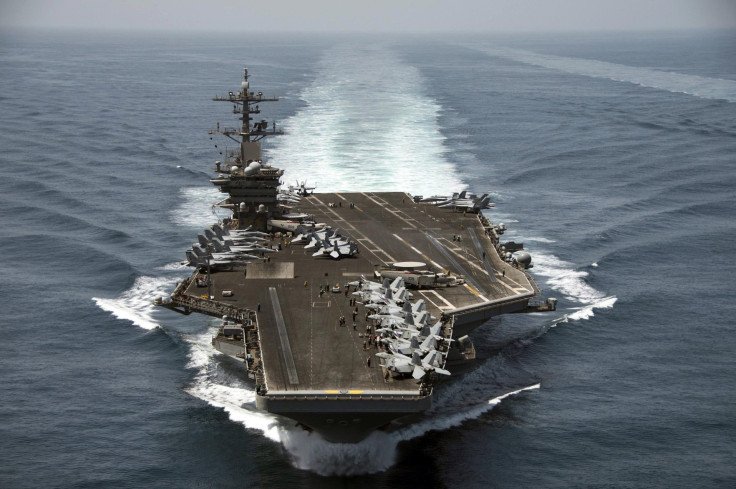South China Sea Big Power Rivalry Pits Chinese Missiles Against US Navy Carriers
The 1946 song "Anything You Can Do (I Can Do Better)," written by Irving Berlin for the Broadway musical “Annie Get Your Gun” seems to be the tune that China and the U.S. are playing in the South China Sea and other waters in Asia.
The U.S., for the first time in about three years, is sending three aircraft carriers to the area in a move thought to be a warning to China to curb its growing naval and military ambitions. China has countered, accusing the Americans of “hegemonic” policies and is holding military drills to show its mettle to protect what it considers its territory.
China’s arsenal includes the DF-21D missille, dubbed the “carrier killer,” that the Chinese mouthpiece Global Times says has rendered the American aircraft carriers obsolete. It also has the DF-26 anti-ship ballistic missiles, China’s first conventionally armed ballistic missile capable of striking Guam.
The U.S forces include:
- USS Theodore Roosevelt, the fourth Nimitz-class nuclear-powered aircraft carrier in the United States Navy.
- USS Nimitz, a supercarrier of the United States Navy, one of the largest warships in the world.
- USS Ronald Reagan, a Nimitz-class, nuclear-powered supercarrier and the ninth ship of her class.
Accompanying the three carriers are naval warships and aircraft that are patrolling the Indo-Pacific waters, according to a Friday Associated Press report.
The pre-pandemic tensions in the South China Sea and other waters in the Pacific-Asia zone were already high over China’s bullying naval actions against its smaller and weaker neighbors. Then it announced the intention to reunite with Taiwan using force if needed; it revealed a new national security law it wishes to impose on Hong Kong.
Among the other issues are China's human rights abuses against the Uyghur Muslims in the eastern part of the country and its handling of the early stages of the coronavirus outbreak.
The trade war between the two superpowers was gaining in intensity when the coronavirus emerged in a Chinese market and soon overshadowed the entire globe as the COVID-19 pandemic.
All three U.S carriers were affected by the coronavirus, causing a temporary lapse in military strength for several weeks. During that time, it appeared that China was stepping up its aggressive actions to take advantage of the situation.
Now, the U.S has returned to prove it is still the world's number one naval force, but it will need to proceed with caution. China’s DF-21D and DF-26 missiles are designed to strike medium-sized to large surface vessels from above at extremely high speeds, making them difficult to intercept, according to information that is publicly available.
The U.S. and China can go tit-for-tat militarily but the anthology of Chinese patriotic songs, in the opinion of most westerners, is no match for the tunes written by Irving Berlin.

© Copyright IBTimes 2024. All rights reserved.





















